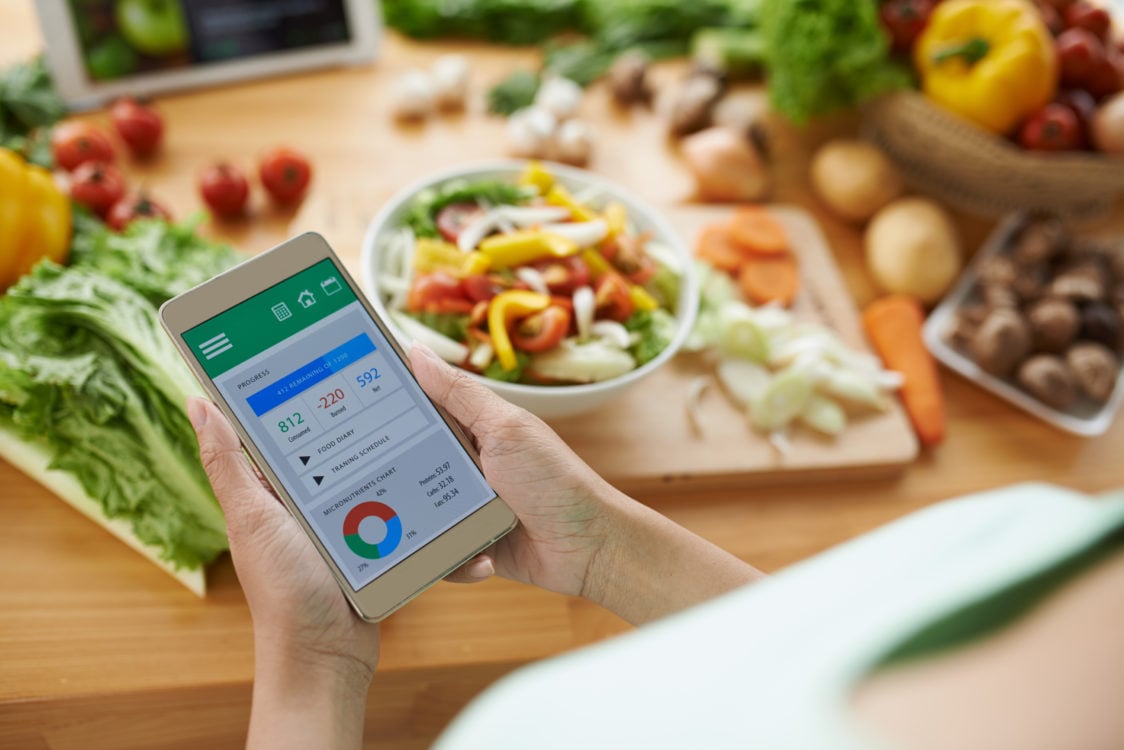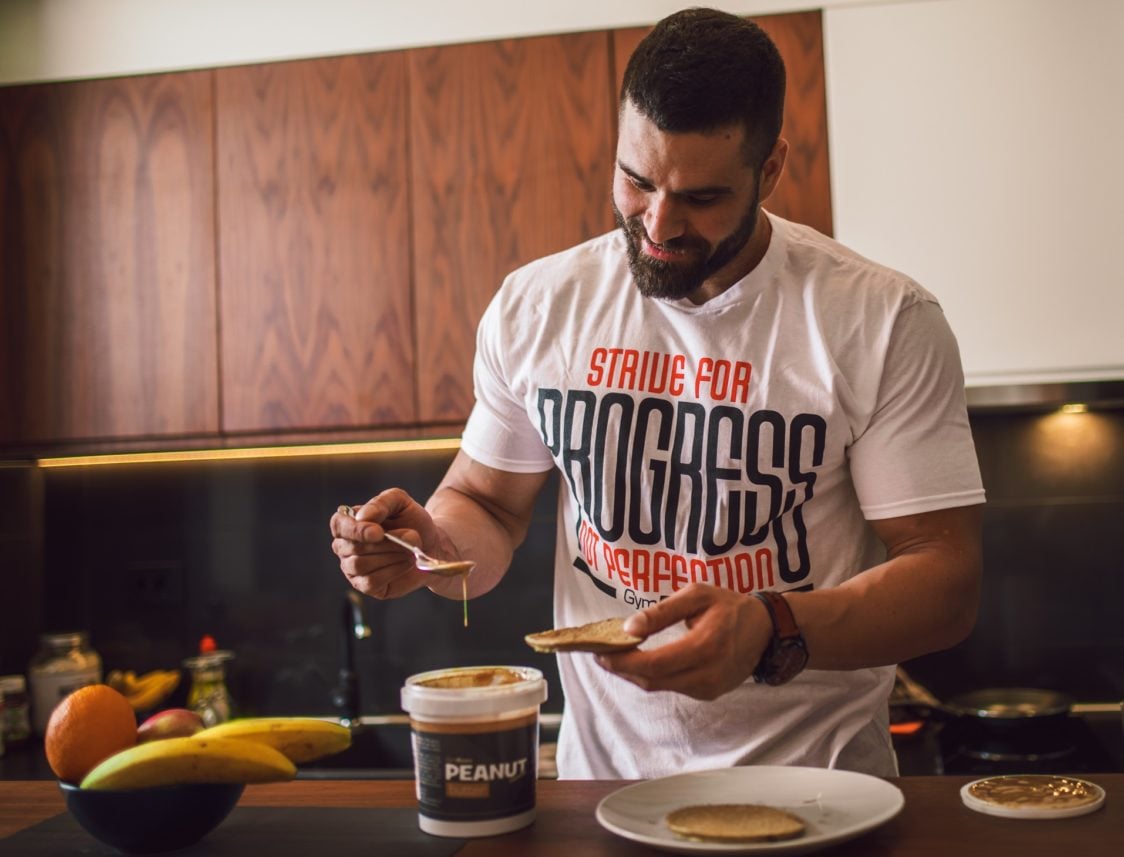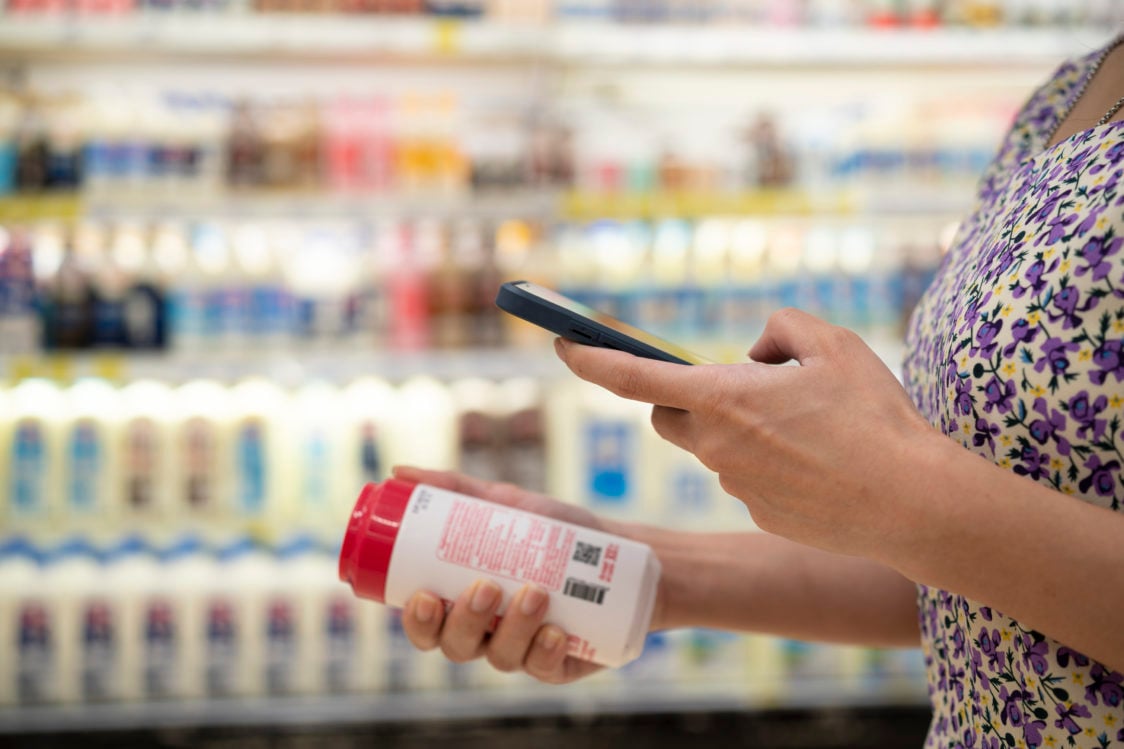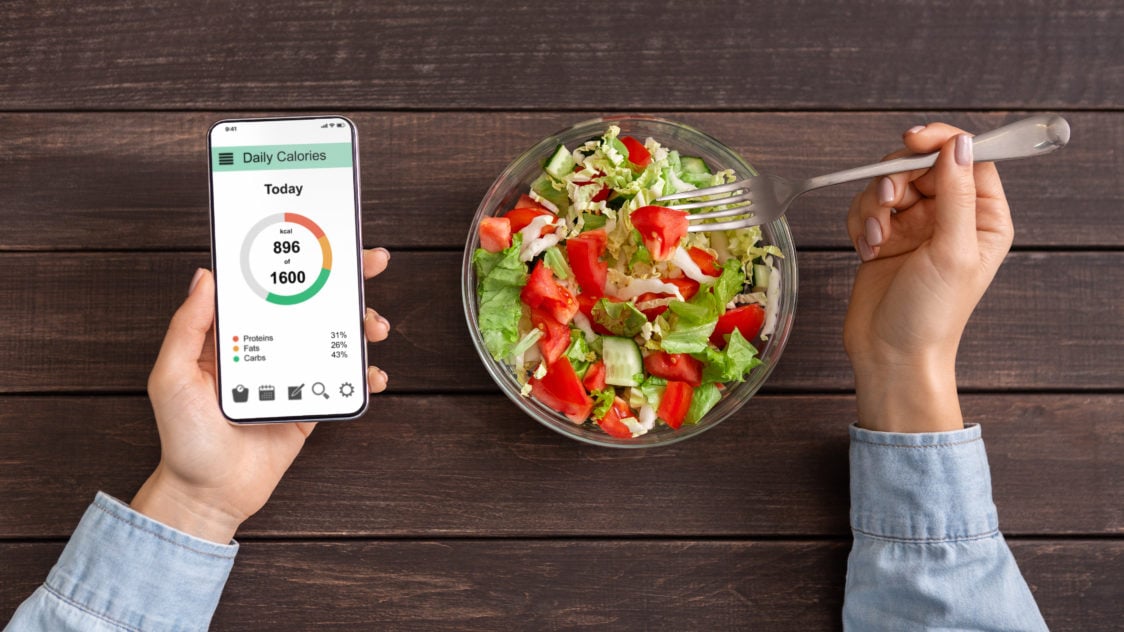Table of Contents
Trying to lose weight or gain muscle? Then someone must have already suggested to you to count your calories. It’s a great way to easily control your daily energy intake. However, if you’re not very familiar with calories and you’re just starting out, chances are it won’t go as smoothly as you’d expect. Beginners in particular often make fundamental mistakes that can delay progress for weeks or even months. Yet you may feel like you’re really trying hard and doing everything right. But don’t despair, you’re not alone. Today, we’re going to take a look at the most common mistakes when it comes to food journaling and calorie counting. We’ll also give you tips on how to avoid them.
How much energy do you actually need?
Before we get into the actual calorie counting mistakes, I’d like to make a note about determining energy intake. Just because your friend is losing weight on a 2300kcal intake doesn’t mean that’s the ideal reduction intake for you. This is because each of you has a different starting point, which is determined by lifestyle, physical demands of work, hobbies and other activities. Thus, a less active petite lady who is slightly overweight will have a different recommended intake compared to a tall obese man who also does sports. However, in addition to your physical constitution, your lifestyle and many other factors such as age, dieting history and so on also have an impact. [1]
The easiest way to determine your calorie intake against your goal is to use our online energy and macronutrient calculator. It will estimate approximately how many macronutrients and total calories you should be eating based on your age, weight, height, activities and lifestyle. You can use these values as a sort of stepping stone when creating your diet and counting calories. But don’t take them as something fixed. See for yourself how your body reacts to a given intake. You can then change the values accordingly.
You don’t have to worry about it though, calorie counting isn’t the only way to lose weight. For example, you can follow healthy eating rules. After all, if you do decide to count at least for a while, you will gain valuable experience and information that you will use in the future.
If you want to learn more about how much energy each macronutrient contains and how to navigate calories, read our article Simple Guide to Counting Calories to Achieve Your Goals.

The ten most common calorie counting mistakes
Have you been in a situation where you have been counting calories for one or two months and you feel like your body is not changing? If you’ve set your calorie intake well, it’s quite possible you’re making a mistake somewhere else. It’s a chore to get everything right, especially if you eat out occasionally. So let’s take a look at the most common mistakes so you can prevent them.
1. Writing down food with a time gap
Your memory may be to blame for the first mistake. You’ve been doing homework at school or work all day, you have to keep the household running, and in the evening you finally find the time to write down what you’ve actually eaten all day. Yeah, but who can remember after so many hours if you had seven or ten spoons of cereal for breakfast. And those biscuits with your coffee, did you eat those today, or was that yesterday? And the chocolate from your colleague in the morning…
With this approach, it’s easy to forget some ingredients or their quantities. Plus, with such approach, you may enter your daily intake in the app in the afternoon and find you only have a measly 100 kcal left for the rest of the day. You certainly don’t want that. Going to bed with a grumbling stomach isn’t pleasant.
What to do about it?
A simple way to avoid this mistake is to record the food when reading the recipe or preparing the dish itself. When you download the app on your phone, you simply weigh the ingredients, write them down and add more. That way, you won’t forget anything. Plus, you’ll keep track throughout the day of how much energy you’ve already eaten and what other foods you can fit into your intake that day. It’s even easier to plan your intake for the day in advance and then prepare each meal according to the ingredients you’ve recorded. That way, you don’t have to worry about writing it down in the evening and can get on with more enjoyable activities.
2. Second guessing food values
This mistake is often made by beginners who do not want to deny themselves regular meals in restaurants. You might think that if you’ve been weighing your food for a week, you’re all set. Believe me, that’s not the case. It’s easy to guess that the potatoes on your plate aren’t actually 100g, but rather 300g. It can be the same with meat. People tend to underestimate their intake.
There is even a study that confirms this. Its participants thought they were eating 1,200kcal. But in fact, they were consuming 47% more. What’s more, it’s not just the general population that has a problem with estimation. Even dietitians underestimate their intake, by an average of 223kcal per day. Yet one might expect them to be perfect in this area. [2-4]
What to do about it?
If you’re new to calorie counting, it’s best to eat as little as possible in restaurants to better control your intake. By weighing your food correctly at home for a while, you’ll be able to get a better estimate of the realistic portion size at a restaurant over time. You can then easily tell if you have 100g or 300g of cooked pasta on your plate.
If you’re already eating at a restaurant and you’re not completely proficient at estimating, try to choose restaurants that list the raw weight of their food. This will make estimating much easier. At the same time, you can arrange with the staff that you want the sauce with your meal separately so that you can better control the amount. Some restaurant chains even list on their websites how many calories and macronutrients each dish contains. This makes it easy to record your food intake. Then you don’t have to go to the restaurant with a kitchen scale and weigh the individual components. That would really have nothing to do with a healthy relationship with food.
If you regularly eat at fast food restaurants, for example, try to read the nutritional value of the food on their website. You might be surprised how many calories your favourite double cheeseburger with an extra portion of bacon has.

3. Using ready-made templates regarding pieces and portions of food in the app
Banana – 1 piece, paprika chicken – 1 serving, chicken baguette – 1 piece. Isn’t this what your note-taking looks like? Then you’re probably right that that’s the problem. There is no such thing as a serving. One serving is for a lumberjack after a day at work and another for a slim woman with a sedentary lifestyle. And then, you can only guess how big the serving is that the calorie counting apps have in mind.
What to do about it?
When you prepare your portion of food, weigh the individual finished components and write these down (use the finished product weights in this case). However, it is easier to write down and weigh all the ingredients raw. Then you can just enter that you ate, say, ¼ of the whole thing, and the app can directly calculate how many individual ingredients it was. This way, you can easily keep track of your calorie intake even if you’re cooking for multiple people and don’t want to prepare special meals for yourself.
And I cannot allow myself to forget to provide one more practical tip. If you’re adding a dish you prepare yourself to the app, save it right away. The next time you’re cooking, you don’t have to track the ingredients again, just adjust the weight, which saves you a lot of time. Many of us have a few favourite dishes that we cook regularly anyway. Saving them in the app can make the job of recording them much easier.
You might be interested in these products:
4. Estimating with dish size
How many grams do you think one spoon of peanut butter have? When you’re scooping up peanut butter of a liquid consistency, it’s not exactly easy to scoop up too much. It is different with peanut butter that you let solidify in the refrigerator, for example. Then you’ll be able to put a hefty dollop on a spoon, which can be dozens of grams more than a tablespoon in calorie applications. And with nuts in particular, which are a rich source of fat, it makes a difference whether you write down 10g (60 kcal) or 35g (181 kcal).
What to do about it?
Forget about guessing with cups, spoons and other utensils. The best way to be accurate in counting is to pick up a good old kitchen scale. At least in the beginning, it will help you get your portions measured by eye. Eventually, you may get to the point where you no longer need the scale and can estimate your food with the precision of a Swiss watch.

5. Not writing down every bite
Once you’ve started writing down your calories, you need to be responsible and really write everything down. It’s not enough to just consider the finished portion of food you have on your plate. The ten tablespoons of sauce you ate while cooking counts too. You also need to write down any tasting from your partner’s plate, and even the bites into a chocolate bar from a colleague. Everything counts. All this can add several hundred kcal to your daily intake.
What to do about it?
If you can’t stop yourself from nibbling, keep a kitchen scale handy at home at all times. Before you eat a food, weigh it and write it down. And if you don’t know how to count this in your records, put the whole dish and plate on the scale and see how many grams have been lost. Then write down the amount. It’s quite complicated, isn’t it? Then the easiest thing to do is to avoid nibbling altogether and really only eat what you put on your plate. Often, people don’t even realize that they are bored, walking around the house and nibbling at all sorts of goodies. The calories from this can add up over the course of a day.
You will see that when you get rid of this habit, losing weight will be much easier. By stopping picking, you’ll save calories that you can then use to increase the portion size of your lunch or dinner. That’s something you’ll appreciate, especially if you’re on a diet.
Do you want to learn more about why picking and nibbling doesn’t help you lose weight? Then you shouldn’t miss our article How Does Picking Prevent You From Losing Weight? 11 Easy Tips to Get Your Eating Havits Under Control.
6. Overestimating your energy expenditure
You’ve been at the gym for half an hour and you feel like you’re burning energy like a nuclear power plant? I’m gonna disappoint you, but it’s not that hot. A short workout plays only a small role in your total daily expenditure. But don’t worry, you’re not the only one who has these ideas about your energy expenditure. The aforementioned study confirms this. According to this, people tend to underestimate their intake and overestimate their expenditure, by as much as 51%. They can often mistakenly get the impression that they’ve just exercised, so they deserve that cake with the extra serving of chocolate. As a result, this leads to them topping up the calories they’ve burned and adding a little extra. Then it’s difficult to be in a calorie deficit. [2]
What to do about it?
If you’re keeping track of calories burned in sports, at least use a watch or chest belt that takes your heart rate into account. Don’t use generic values that apps show you. Often they are significantly out of line with reality. To avoid the hassle of estimating calories burned through sport, calculate your intake in a calculator that already takes your active lifestyle into account. Your only concern will then be your food intake.
Wondering how many calories you burn through different activities? Then you should not miss our article How to Lose a Kilo of Fat and How Much Energy Is Actually Hidden in It?

7. Confusing raw and cooked ingredients
Do you enter a food item into the app and no longer consider what state it was in? This can be another mistake that delays progress. It makes a big difference whether you count raw or cooked food. For example, rice has 3 – 4 times fewer kilocalories in the cooked state compared to the raw state for the same amount. It owes this to the water it absorbs during cooking. And similarly, most cereals and pseudo cereals do the same. By making this mistake, you can unknowingly count several hundred fewer kilocalories than you actually ate.
What to do about it?
The easiest way is to weigh all foods raw. This will give you a much more accurate estimate than if you weigh the food cooked. However, if you buy ready-cooked rice, for example, always look for the food in its cooked state. You will also see that its calorie value will be different from its raw state (100g of raw rice, pasta or couscous has approximately 350 kcal).
To get a better idea, try weighing different dishes raw and cooked. That way you can see how their weight changes. Ultimately, this can also help you with estimating dishes in restaurants. If you have a pile of rice in front of you, you’ll be able to better estimate how much grams it probably was when raw.
8. Not dealing with a certain type of product
Do you like to have baked goods with your snack? Then you should be careful how you write it down. Depending on the type, 100g of a white bread roll can vary by tens of kilocalories. The same goes for other foods, like when you’re logging your favourite hummus into the app. It makes a difference whether you make it yourself at home or buy it in a box, which can have a much higher fat content. It’s these inaccuracies in specific types of foods that often cause you to balance your intake and expenditure instead of being in a calorie deficit.
What to do about it?
If you are making bread, hummus or other food at home, it is best to write down the raw ingredients directly. You can also save such foods in the app and then just enter the proportion eaten (for example, 1/10 – if you eat one bread roll out of ten). In the case you want to write down a purchased food, always search for a specific type by brand.
Some apps (e.g. MyFitnessPal) can even scan the barcode of your food and track it, making your job a lot easier. And if a food you’ve purchased isn’t in the app, you have two options. Either you can create it yourself, saving other users the work, or you can try to find as many matches as you can to existing foods in the database. This will then reduce the risk of major deviations.

9. Not writing down fluids
Have you ever heard the phrase “liquid calories”? These can often be a hidden threat, especially during weight loss. Unfortunately, it’s not enough to just write down the salad you ate for lunch in your app. The 500ml of juice and McCafé® Mocha Frappé you drank with it also counts. This Immediately increased the caloric intake by an impressive 700 kcal.
These drinks alone can easily cover a third of someone’s daily intake. I don’t need to mention that these drinks won’t keep you full for long, right? Not to mention how many calories a person can drink when going to the pub with friends for “one” beer. See for yourself in the table how many calories different drinks can have. You may be surprised.
How many calories are in beer, wine, coffee, juice and other drinks?
The values given in the table are only indicative, they may vary from one manufacturer to another.
Drink | Energy value |
|---|---|
| Coffee without milk and sugar | 0 kcal |
| Water | 0 kcal |
| Beer (500 ml) | 210 kcal |
| Cola (500 ml) | 220 kcal |
| Juice (500 ml) | 220 kcal |
| Semi dry wine (500 ml) | 360 kcal |
| McCafé® Mocha Frappé (Medium) | 500 kcal |
What to do about it?
In this case, the solution is simple – don’t drink your calories and save them for food instead. It’s best to base your drinking regimen on water, teas, or varied calorie-free drinks. If you do go out for a drink or coffee with a friend, be honest and factor it into your intake. But always remember that, especially when losing weight, it’s better to eat your calories than drink them.
Want to learn more about how many calories different drinks have and how they can interfere with our weight loss? Take a look at our article Where Are Liquid Calories Hiding and How Do These Empty Calories Hinder Your Weight Loss?
10. Not being consistent
I assume that since you’ve already started counting your calories, you want results. But they won’t come if you’re not consistent in this activity.
- Are you writing down calories only on weekdays?
- Are you not writing down your foods and drinks when you go to a party?
- Are you not writing everything down? (yes, that includes kebabs eaten at 3am at the station’s take away window)
- When you don’t feel like pulling out kitchen scales, do you estimate the weight of the food by eye?
If you answered “yes” to at least one of these questions, you may have discovered the cause of your problem.
What to do about it?
Consistency in what you do is the key to success. This is doubly true when it comes to calorie counting. You need to know exactly how your body reacts to a certain amount of food so you can manipulate your intake if necessary. And that’s hard to do if you’re skimping on your calorie logging. In the end, you’re only cheating yourself.
Sure, it can happen that once a month you have such a hectic day that you just don’t write down the food you’ve eaten. It’s okay, we’re only human. In that case, you probably don’t have to worry about jeopardizing your progress. However, if you only regularly write down food Monday through Friday because you know you have parties coming up on the weekend that you wouldn’t be able to fit into your intake, it’s something to think about. In that case, you might want to consider if calorie counting is the right path for you and if you really want the goal you’ve set for yourself. If so, then you should rethink your behaviour and work harder. You will see that various local or global apps are guaranteed to help you with this.

What should you remember?
If you want to move forward in losing weight, gaining weight or achieving another goal, then you should avoid these common mistakes. These are the things that can make the difference between succeeding and giving up in frustration. But, when you do get into calorie counting, keep in mind that these apps can be a great mentor, but a bad master.
They can help you learn a lot about raw materials, what they consist of and their energy value. However, the problem can arise when you find yourself losing control, thinking about calories all the time, and the calorie charts literally take over your life. In this case, you should consider whether calorie counting is really the right way for you. You can achieve great results without it. For example, our article can help you lose weight without charts Calorie Deficit: How to Lose Weight and Have a Life of Your Own?
Do you have someone in your circle who has the feeling that they are practically not eating anything and yet they are not losing weight? Share our article on calorie counting with them, maybe it will help open their eyes.
[1] James Hill, Wyatt, H. R., & Peters, J. C. – The Importance of Energy Balance – https://doi.org/10.17925/EE.2013.09.02.111
[2] Murakami, K., Livingstone, M. B. E., Okubo, H., & Sasaki, S. – Prevalence and characteristics of misreporting of energy intake in Japanese adults: The 2012 National Health and Nutrition Survey – https://doi.org/10.6133/apjcn.042017.11
[3] DO DIETITIANS ACCURATELY REPORT THEIR FOOD INTAKE? – https://weightology.net/do-dietitians-accurately-report-their-food-intake/
[4] Catherine M Champagne et al. – Energy intake and energy expenditure: a controlled study comparing dietitians and non-dietitians – https://pubmed.ncbi.nlm.nih.gov/12396160/

